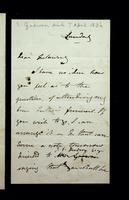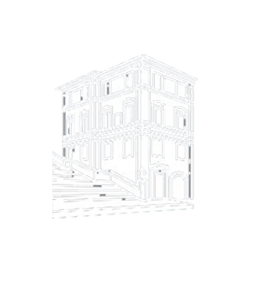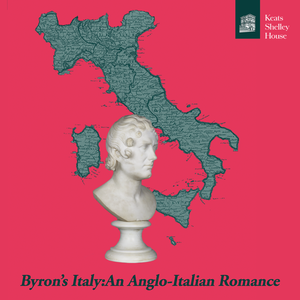MANUSCRIPTS
Pages
-

-
Autograph letter by Mary Shelley to Charles Ollier
-
Mary Shelley had just completed the first volume of what will be her penultimate novel (Lodore, published in 1835) and is sending the draft to her publisher to whom she describes the story as follows: “I do not know how briefly to give you an idea of the whole tale - A Mother & Daughter are the heroines - The Mother who after sacrificing all to the world at first - afterwards makes sacrifices not less entire, for her child - finding all to be Vanity, except the genuine affections of the heart”., Gift of Mrs A. M. Overtow.
-

-
Autograph letter by Mary Shelley to Douglas Jerrold
-
In this short letter to her playwright friend Jerrold, Mary Shelley requests two tickets for his latest comedy titled Beau Nash, which opened at the Theatre Royal, Haymarket, on 16 July. While Mary Shelley had previously written to Amelia Curran in January 1825 that she had little will to enjoy what London had to offer, almost a decade later she can be seen making an effort to go to the theatre, although she does so primarily out of her friendship with the playright.
-

-
Autograph letter by Mary Shelley to Edward Trelawny
-
Mary Shelley writes to Trelawny about the death of Lord Byron, whose funeral cortège had passed by her house. Writing from Kentish Town, ‘our prison’, Mary’s thoughts turn to Italy, the past, and old friends. She also gives Trelawny news of Claire Clairmont, and ‘her present painful mode of life’ as a governess in Moscow, and of the Hunts, who ‘live out of Florence, without any society’., Gift of Colonel and Mrs Call, 1912., Mrs Call’s father was Trelawny.
-

-
Autograph letter by Mary Shelley to Edward Trelawny
-
By this time Mary Shelley had not heard from Trelawny for almost a year. He had accompanied Byron on his trip to Greece to fight for Greek independence and, after the latter’s death, had remained there and married a thirteen-year-old girl with whom he had no language in common. Mary seems eager to receive some personal news from Trelawny, for with both Byron and Shelley gone he is one of the remaining members of their Pisan circle still alive, which incites her nostalgia. Mary recounts that she went to see the actor Edmund Kean playing the lead role in Othello and adds that the play reminded her of him. The reason can be found in the left-hand margin of the letter, where Trelawny later wrote: “At Pisa, 1822 Lord Byron talked vehemently of our getting up a play in his Great Hall at the Lanfranchi it was to be Othelo [sic] he cast the characters thus. Byron Iago—Tre. Othello—Williams Cassio—Medwin Roderigo—Mrs Shelley Desdemona—Mrs William Emilia. Who is to be our audience I asked—all Pisa he rejoined—he recited a great Portion of his part with great Gusto it exactly suited him—he looked it too”. Mary seems to agree with Trelawny’s opinion, since near the end of the letter she writes: “Iago would never have found a better representative that [than] that strange & wondrous creature, whom one regrets daily more—for who here can equal him?” Percy Shelley’s name is missing from the cast list as he was the director of the drama., Gift of Colonel and Mrs Call,, 1912., Mrs Call’s father was Trelawny.
-

-
Autograph letter by Mary Shelley to Edward Trelawny
-
Mary’s father, the philosopher William Godwin, had died on 7 April and Mary wrote this letter “in haste” while making the final arrangements for the funeral. He was to be buried at Saint Pancras churchyard, which housed her mother Mary Wollstonecraft’s tomb. In this letter she asks Trelawny whether he could “go with the Undertaker to fix on the spot - ‘the nearest practicable to my mother’s tomb’”. Mary’s application was successful, since her parents were buried in the same tomb, which is still in existence even today though their remains were moved in 1851 to Bournemouth, where Mary Shelley herself was buried that year., Gift of Colonel and Mrs Call, 1912., Mrs Call’s father was Trelawny.
-

-
Autograph letter by Mary Shelley to Thomas Medwin
-
‘At Jane’s request I inclose you this letter’, Mary writes to Thomas Medwin. She is clearly still in shock, and the letter is brief and disjointed: S. & I were united exactly 8 years ago yesterday—on the 4th of August he wd have been 30—Except that his health was getting better & better I wd not selfishly desire that his angelic spirit shd again inhabit that frame which tormented it—he is alive & often with me now—Every one feels the same, all say that he was an elemental spirit imprisoned here but free & happy now—I am not now—one day I hope to be worthy to join him—my life is chalked out to me—it will be one of study only—Except for my poor boy—, Gift of Colonel and Mrs Call, 1912., Mrs Call’s father was Trelawny.
-

-
Autograph letter by Mary Shelley to Thomas Medwin
-
In this framed letter Mary, employing her elegant hand, is eager to set the record straight about what would be later known as the ‘Masi affair’, which involved a row that had taken place on 24 March 1822 between the Tuscan dragoon Stefano Masi and the male members of the Shelley circle, including Byron. The gentlemen were used to doing some regular pistol practice and that afternoon they had been galloped through by the dragoon, who was later injured by ‘Tita’, Byron’s coachman, and vowed ‘deadly revenge’. The villain of the story ended up being the Irish author-would-be John Taaffe who, according to Mary Shelley, had ‘kept at a safe distance during the row, but fearing to be sent out of Tuscany, he wrote at first such a report as embroiled him with Lord Byron’., Gift of Colonel and Mrs Call, 1912., Mrs Call’s father was Trelawny.
Pages
Byron 200: A digital exhibition










